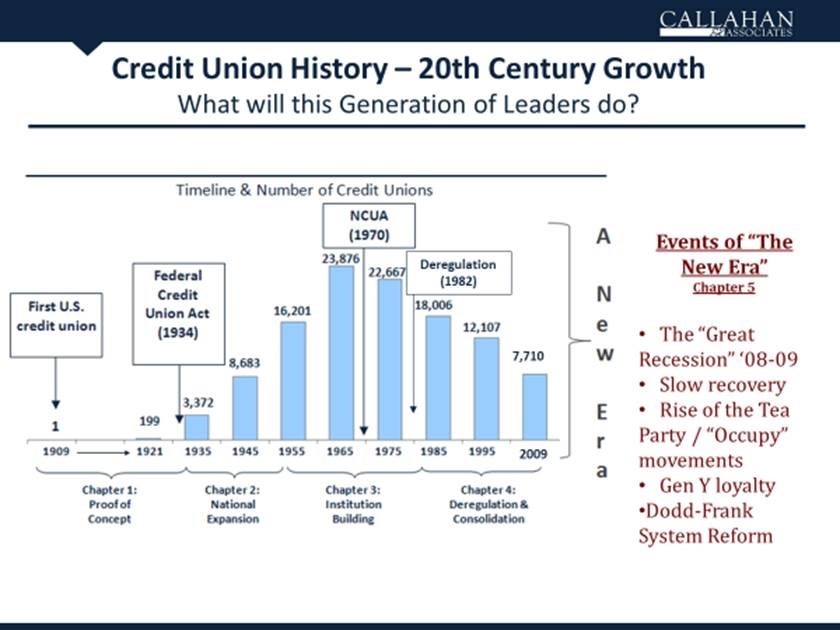In NCUA’s 1978 Annual Report, the agency lists the top 100 federal credit unions by total assets, with hometown, charter year, and asset rankings in ‘77 and ’78.
Wekearnyan Ranks 70th in Top 100
Many names in this top 100 are still familiar as sponsoring organizations were the single largest factor in credit union FOM identity. Only FCU’s are listed. In 1978 there was no data source for the 45 state chartering systems. Some SCU’s were NCUSIF-insured, some privately insured, and some uninsured.
I did not recognize Wekearnyan ranked # 70. I googled it but found no reference. Was it merged? Liquidated? Converted to a new FOM and name? The only indirect mention was to employees of a Western Electric, Bell Telephone subsidiary, with a similar name.
What Could Have Happened?
Now I was intrigued. Could a credit union with a 43-year track record just disappear? That seems contrary to traditional views of credit union resilience.
At year-end 1978 there were 12,759 FCUs with total assets of $34.8 billion. As number 70, this “lost” credit union ranked in the top 0.5% of all federal credit unions. It had scale and assets that were larger than 12,700 smaller charters. This standing should have given it the resources, leadership capability and operational experience to navigate change. That was the conventional wisdom, still espoused today.
Looking Ahead 41 years
To further explore what happened, I ran the list of the top 100 FCUs as of June 30, 2020. Was there a successor? What were the fates of 1978’s other top 100 credit unions four decades later?
Comparing these two top 100 tables raised more questions about the staying power of being in the largest 100 group. A number of credit unions were obvious casualties of sponsor failures. Eastern Airlines Employees (#5); Pan American (#33); or Braniff Airways (#77) are a few examples.
Other credit unions however, retained their relative ranking over these four decades: Fort Knox at #88 is now #86 Abound; or #96 Corning Glass Works Employees is now #91 Corning.
Several credit unions have moved up in rank significantly. Teachers (NY) from #63 to #13; Police and Fire (PA) from #68 to #17. Bethpage from #23 to #10. And Randolph-Brooks from #29 to # 6. These examples appear to support the presumed competitive advantage of the largest credit unions.
But just as soon as one might conclude this, there are examples of the opposite trend. Hughes Aircraft Employees fell from #3 to #22 today (now Kinecta); Andrews from #15 to #58; and State Department from #22 to #59.
One challenge in interpreting top 100 trends is the group is not static, Charter conversions add to or subtract from the 1978 listing. Some notable credit unions that left for state charters and thus not now included are: Lockheed Missile Employees (#13) renamed StarOne; IBM Poughkeepsie Employees (#17), now Hudson Valley; Suncoast Schools (#35). IBM Mid America #100 converted to a mutual savings bank charter.
Also new credit unions join the list such as ESL, a former mutual bank, now #14. The State Farm ranking #24 is new, but a result of merging over a dozen separate, local State Farm credit unions into a single organization.
One Observation from This Lost FCU
After analyzing the myriad comings and goings and relative re-rankings between these two lists, I found no trace of Wekearnyan FCU.
Conventional wisdom is that credit union size is critical for success. This premise is that bigger is better because size creates the scale and resources to remain competitive. Or so it seems if one looks at only the latest data or at trends just several years back.
But when the time period is extended further, the proposition about size becomes much less supportable. Credit unions prosper not because they are the biggest, have the leading market share, or even approach some ideal “scale” of operations.
Size may be useful in certain circumstances, but it is not the cause of success. Rather, that outcome depends on effective leadership. The responsibility of CEOs and boards is to create relevant and consistent value for its member-owners. Well executed business models are the basis for resilience and longevity.
Monday I will look at the number 1 and 2 ranked credit unions in both lists, Navy and Pentagon. What does their relative performance with each other suggest about the assumption that size is a necessary foundation for success?
Do Your Own Analysis
In the meantime, look at these two lists–the comings, goings and changes in relative rankings. What do you take away from this decades-long perspective about credit union performance? There are multiple case studies for analyzing leaderships’ choices. What example is most relevant to your circumstances?
And if anyone knows what happened to the lost credit union, please share your knowledge.

